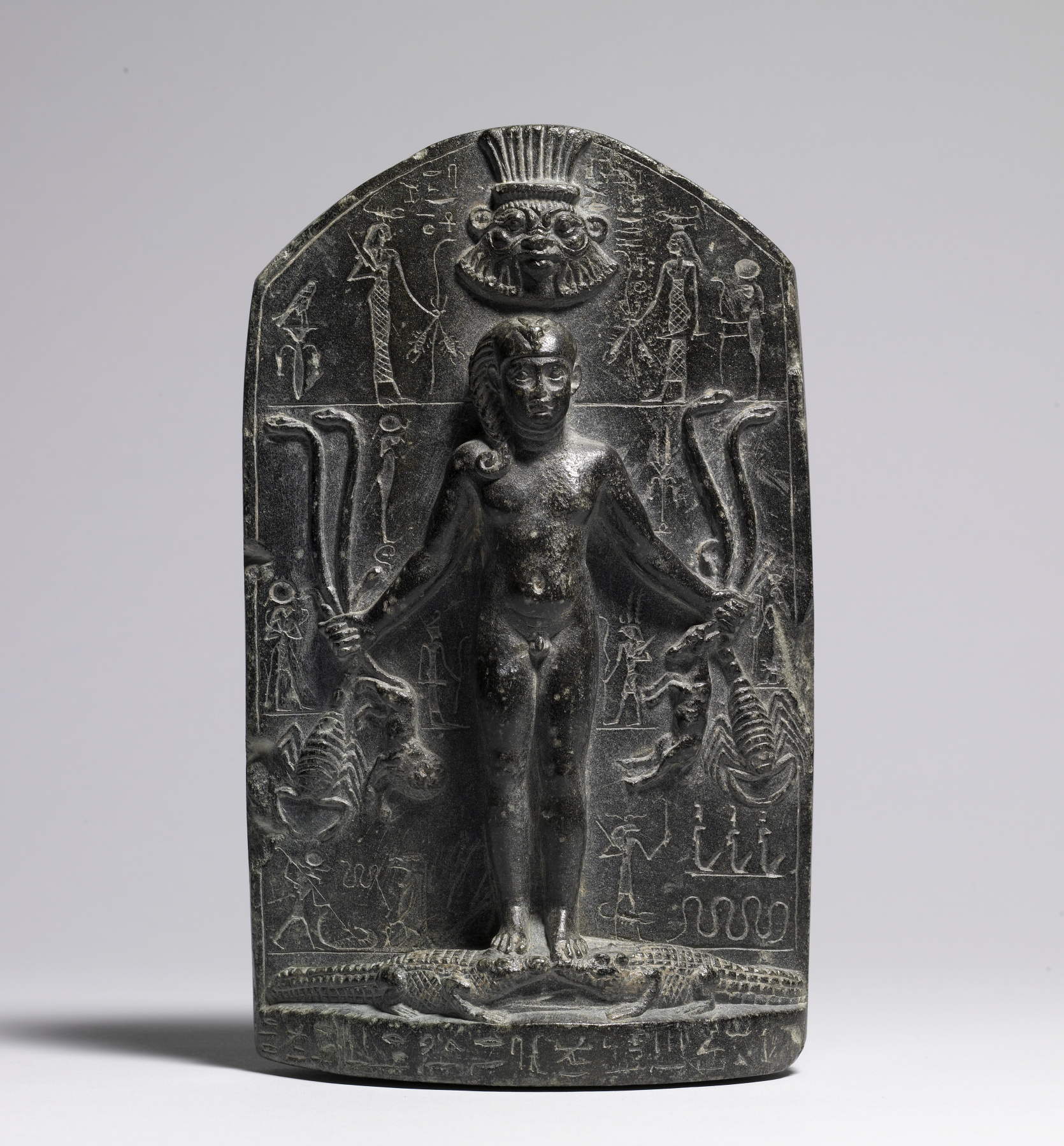Horus the Child Standing on Crocodiles
(Ancient Egypt and Nubia )
Horus the Child stands on crocodiles and controls snakes, scorpions, an oryx, and a lion. Called a "cippus," this is a magical device believed to ward off poisonous and dangerous animals and to heal those who had been bitten or stung. Liquid would be poured over the "cippus" to absorb the strength of the images and spells and then be drunk by, or poured on, the afflicted.
Provenance
Provenance (from the French provenir, 'to come from/forth') is the chronology of the ownership, custody, or location of a historical object. Learn more about provenance at the Walters.
Henry Walters, Baltimore [date and mode of acquisition unknown]; Walters Art Museum, 1931, by bequest.
Exhibitions
| 2013-2014 | Egypt’s Mysterious Book of the Faiyum. The Walters Art Museum, Baltimore. |
| 2005-2006 | Ägypten Griechenland Rom: Abwehr und Berührung. Staedtische Galerie Liebieghaus, Frankfurt am Main. |
Conservation
| Date | Description | Narrative |
|---|---|---|
| Examination | technical study | |
| 2/1/1941 | Treatment | cleaned |
| 10/20/1998 | Examination | survey |
| 7/14/1999 | Treatment | cleaned; stabilized; loss compensation; coated |
Geographies
Egypt (Place of Origin)
Measurements
H: 9 1/4 x W: 5 9/16 x D: 2 1/4 in. (23.5 x 14.1 x 5.7 cm)
Credit Line
Acquired by Henry Walters
Location in Museum
Accession Number
In libraries, galleries, museums, and archives, an accession number is a unique identifier assigned to each object in the collection.
In libraries, galleries, museums, and archives, an accession number is a unique identifier assigned to each object in the collection.
22.140




